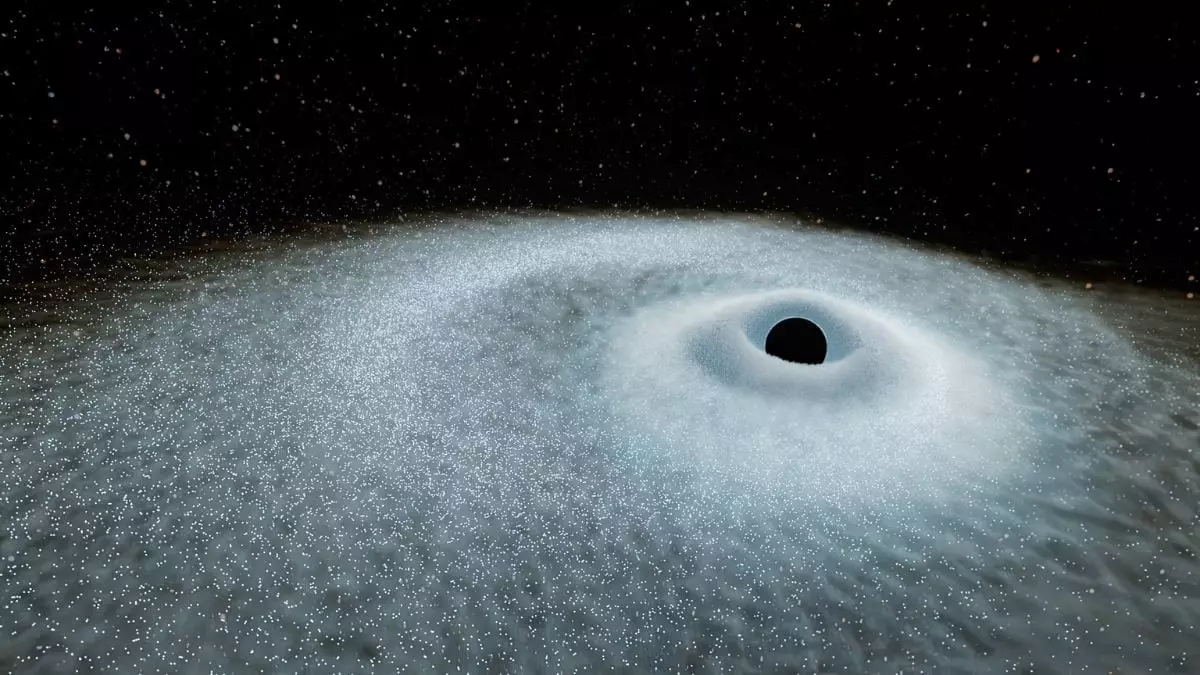In the ever-expanding cosmos, where unimaginable forces collide and interact, recent discoveries have brought forth a new chapter of revelation. The identification of Extreme Nuclear Transients (ENTs) marks a paradigm shift in our understanding of the universe’s most ferocious phenomena. These cataclysmic explosions—where stars three times more massive than our Sun succumb to the voracious appetites of supermassive black holes—are unlike anything previously observed. With brightness magnitudes approximately tenfold that of conventional tidal disruption events, ENTs pose a fascinating enigma that pushes the boundaries of astronomical knowledge.
Light Years Ahead: The Role of Advanced Observational Techniques
At the forefront of this astronomical leap are advanced instruments, such as the European Space Agency’s Gaia spacecraft. Researchers like Jason Hinkle from the University of Hawaii have harnessed these technologies to unveil the remarkable flares observed in 2016 and 2018, followed by a subsequent eruption in 2020. The sheer energy released during these events eclipses that of supernovae, painting an enthralling tableau of light and energy across the cosmic landscape. These observations not only affirm the existence of ENTs but also invite us to reconsider the dynamics of black holes and their impact on stellar evolution.
This newfound visibility of phenomena that light up the depths of space presents an invaluable tool for cosmologists. The brightness of ENTs enables scientists to peer deeper into ancient galactic centers, unearthing the feeding habits of black holes that played pivotal roles in shaping the early universe. Benjamin Shappee, a co-author of the landmark study, aptly notes that these flares illuminate the complex process of supermassive black hole growth, bridging gaps in our comprehension of cosmic evolution.
Long-Lasting Events Shatter Existing Models
The data reveals that ENTs defy traditional expectations surrounding cosmic explosions, as they endure significantly longer than their explosive counterparts observed in tidal disruption events. This newfound endurance invites scrutiny of existing astrophysical models, compelling researchers to adapt their theories to accommodate these long-lived bursts of energy. It raises an essential question: What implications do these findings hold for our understanding of energy transfer throughout galaxies?
While excitement permeates the astrophysical community, there’s an acknowledgment of the challenges that still lie ahead. ENTs, while illuminating, are shrouded in mystery with many aspects yet to be dissected. Scientists must remain diligent in their pursuit to understand the mechanics behind these violent cosmic performances.
The Future Awaits: What Lies Beyond the Horizon?
Anticipating the arrival of superior observational missions, astronomers anticipate further discoveries that could demystify the enigmatic nature of ENTs. With advanced technology on the horizon, the potential for unraveling even more intricate details about these destructive events looms large. The future promises to be one of exploration, insight, and expansion—as we delve deeper into the mysteries of the universe that challenge the very fabric of what we know.
In harnessing the power of scientific inquiry and innovation, we stand on the brink of a deeper understanding of not just Extreme Nuclear Transients, but also the universe itself. The implications stretch far beyond the immediate; they pose a challenge to our perceptions of existence and hint at uncharted territories in the vast ocean of space. The cosmos continues to be a theater of exploration, with each discovery acting as a beacon guiding us toward greater awareness of our place within the grand tapestry of time and space.



Leave a Reply